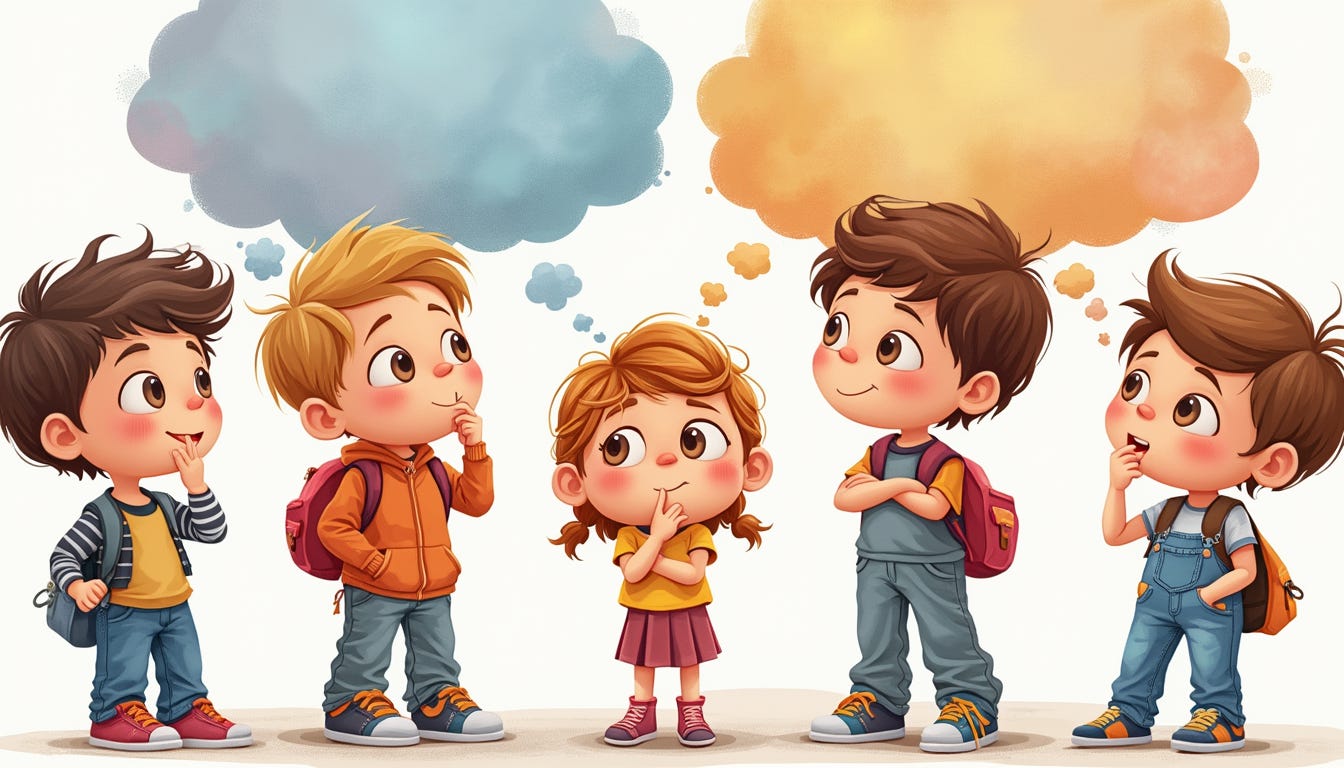How Does AI Make Images?
Episode 3
Hello Creators of Tomorrow!
We’re back with another episode of AI and the Kid! This week, Emily and Alex explore how AI creates images—from lifelike photos to abstract art. They’ll also dive into the science behind photography and how cameras work.
Let’s dive into this week’s adventure!
What You'll Learn in This Episode
AI and Images: Learn how AI uses datasets to create pictures, including realistic faces and imaginative artwork.
AI History: Discover when the first AI image was created.
Photography Basics: Find out how cameras capture images.
Listen to the Podcast
You can find AI and the Kid anywhere you get your podcasts.
A Note from Emily
Abstract art does not follow specific rules. This allows AI to be super creative while generating art. This week try creating your own abstract art. It is a way for you to share your point of view with the world.
I hope you enjoy this episode.
🤖 Chat with Gear
Want to discuss the episode more? Try out our custom chatbot, Gear. Gear can answer all your questions or help you explore the topics from this episode more.
Fun Fact Corner
Did you know the first AI artwork was made in the 1970s?
In this episode, Emily told us about an abstract painter named Harold Cohen, who created a program called AARON in 1974. AARON was designed to draw and paint by itself. Aaron’s art was displayed in museums and is still remembered as one of the earliest examples of AI creativity.
You find AARON artwork in museums like the Whitney Museum of American Art in New York City.
Check out this photo of Harold Cohen and his AARON installation. It’s hard to believe that AI has been creating images for decades!
Beyond the Podcast: Fun Experiments to Try at Home!
Experiment 1: Be a Light Explorer
Grab a flashlight and a clear glass of water. Shine the light through the glass onto a wall.
Observe how the light bends as it passes through the water. This demonstrates refraction, a key concept in how cameras capture images!
Experiment 2: Create Your Own Abstract Art
Use crayons, paint, or markers to make your own abstract artwork.
Then, try an AI tool like DeepDream Generator or NightCafe to create abstract art based on your ideas. Remember always to have an adult help you when using AI tools.
Compare the two—what’s similar and what’s different? Which one do you like better?
Experiment 3: Make a Pinhole Camera
Create a simple pinhole camera using a cardboard box
Observe how light creates images
Compare this to how digital cameras work
Experiment 4: Say What You See Challenge
Get an adult and visit Google Arts & Culture's "Say What You See" game
Look at different AI-generated artworks and describe the image
Compare the image generated from your prompt with the example
Note which details you spotted that AI missed (and vice versa)
Think about how humans and AI "see" differently
You Tell Us!
Bonus Content
Download this coloring page created by AI just for you!
Top Questions from This Episode
How does AI use datasets to inspire its creations?
Is AI itself an artist, or are only humans considered artists?
Can AI make abstract art without any human help?
Use these questions to spark discussions with family and friends!
What’s Next on AI and the Kid?
Next week, Emily and Alex explore AI Voice Assistants! Learn how Alex creates sounds differently from human vocal cords and uncover the secrets of voice synthesis.
Call for Questions: Be Part of the Podcast!
Have a burning question about AI, science, or anything else that makes you curious? Emily and Alex want to hear from YOU!
📧 Email: aikidmedia@gmail.com
📱 Message us on Substack: @aikid
Your question might be featured in an upcoming episode!
Stay Curious
Keep reading and learning! Remember, as Emily and Alex always say:
"Be creative, learn, and keep discovering. Because you are the creators of tomorrow."
Start your AI adventure with a friend. Share the link below! Let us know what you think, or share your fun experiments in the comments below.
This newsletter was written in collaboration with AI. The main image was created in Canva by a human.






